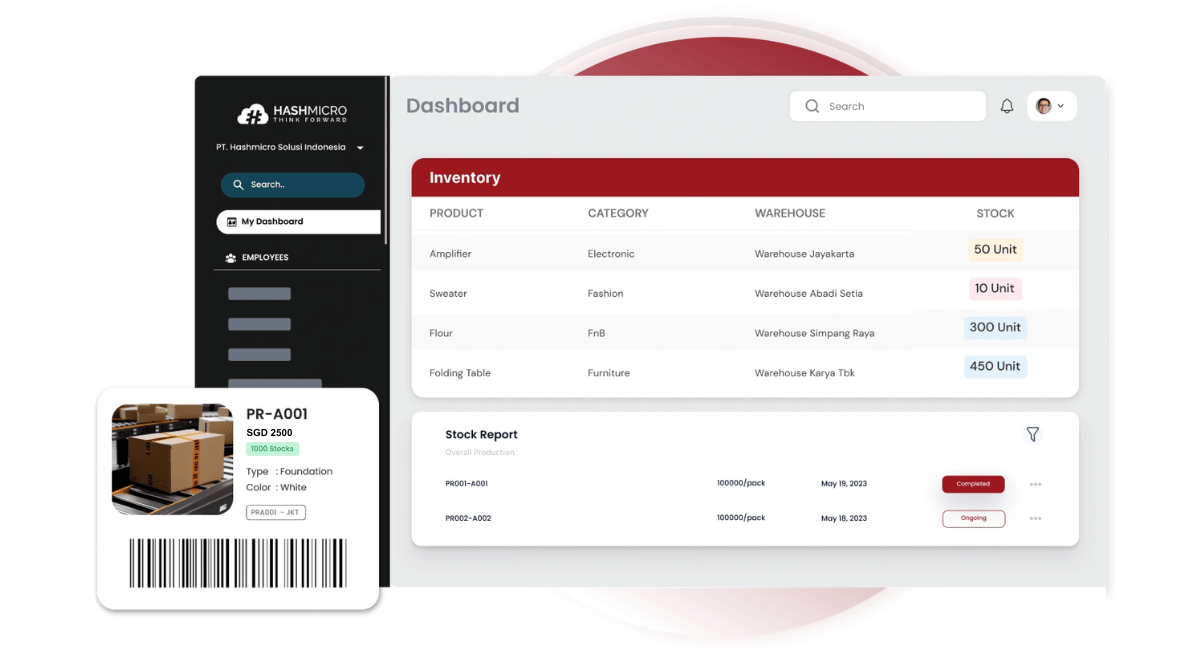Did you know that 20% of items often account for 80% of the value? This eye-opening statistic is the foundation of ABC analysis, an approach to managing inventory that prioritizes stock based on its value to the business. In a competitive market where efficient inventory control can make or break a company, understanding and implementing ABC analysis is crucial for success.
In this comprehensive guide, we will explore the world of ABC analysis and its benefits for inventory control. We will explore how this method categorizes inventory into three categories: A-items, B-items, and C-items, each representing various levels of value and priority.
Additionally, we will discuss how to streamline the analysis process using inventory management software, enhancing efficiency and optimizing stock management.
Key Takeaways
|
Table of Content:
Table of Content
What is ABC Analysis?
ABC analysis is a method of categorizing inventory items based on their importance and value. This approach, derived from the Pareto Principle, allows businesses to prioritize their resources and optimize inventory control. By classifying items into three groups, A, B, and C, based on their revenue and control measures required, businesses can effectively manage their stock and ensure the availability of high-value items.
The Origin of ABC Analysis
The concept of ABC analysis can be traced back to Italian economist Vilfredo Pareto. Pareto observed that 20% of the pea pods in his garden produced 80% of the healthy pods. This observation led to the realization that a small percentage of items often contribute to a large percentage of the value. Building upon this idea, ABC analysis in inventory control was developed to categorize items based on their significance and value.
| Key Points | Benefits |
| ABC analysis categorizes inventory items into three groups: A-items, B-items, and C-items. | Efficient resource allocation |
| The categorization is based on the revenue and control measures required for each item. | Improved inventory management |
| High-value items are classified as A-items and require tight control and priority. | Cost optimization |
| Low-value items are assigned as C-items and can be managed with minimal resources. |
3 Categories of ABC Analysis
ABC analysis is a powerful method that categorizes inventory items into three distinct categories based on their value and importance. This categorization enables businesses to allocate their resources effectively and prioritize inventory management efforts. Let’s explore the three categories of ABC analysis in detail.
Category A: High-Value and High-Priority Items
In ABC analysis, Category A consists of high-value items that significantly contribute to a business’s revenue. These items are of utmost importance and require tight control and monitoring. They typically represent a small percentage of the overall inventory but contribute a significant portion of the sales and profits.
Businesses must prioritize Category A items to prevent stock-outs and ensure their availability to meet customer demand. Effective inventory management strategies, such as accurate demand forecasting and maintaining sufficient safety stock levels, are crucial for managing Category A items successfully.
Category B: Medium-Value and Medium-Priority Items
Category B items in ABC analysis include medium-value items that generate moderate sales and profits for the business. While they are not as critical as Category A items, they still require attention and control.
Businesses need to establish appropriate inventory management practices for Category B items to maintain a balance between adequate stock availability and cost optimization. These items often have a moderate demand and can be managed through strategies like reorder point optimization and periodic review systems.
Category C: Low-Value and Low-Priority Items
Category C items represent low-value items with minimal demand and sales. These items contribute less to the business’s revenue compared to Category A and B items. They are typically inexpensive and have slow inventory turnover rates.
For Category C items, businesses should adopt more relaxed control measures and focus on cost optimization. These items often have low reorder quantities or may even be produced on a make-to-order basis to minimize inventory holding costs. By identifying Category C items, businesses can streamline their inventory management efforts and avoid tying up unnecessary resources.
Overall, ABC analysis categorizes inventory items into three distinct categories based on their value and importance. This classification allows businesses to prioritize their resources, optimize inventory management practices, and improve overall operational efficiency.
| Category | Description |
| Category A | High-value and high-priority items that contribute significantly to revenue. |
| Category B | Medium-value items that generate moderate sales and profits. |
| Category C | Low-value items with minimal demand and sales. |
Benefits of ABC Analysis
ABC analysis offers several benefits for effective inventory control. By categorizing items into A, B, and C, businesses can optimize their resource allocation, improve inventory management, and achieve cost optimization.
Efficient Resource Allocation
One of the main advantages of ABC analysis is efficient resource allocation. By categorizing inventory items based on their value and importance, businesses can prioritize their resources and focus on the most valuable items.
This enables businesses to allocate their time, effort, and storage space more effectively, ensuring that the high-value items receive the attention they deserve. By aligning resources with the most crucial items, businesses can streamline their operations and improve overall efficiency.
Improved Inventory Management
Another significant benefit of ABC analysis is improved inventory management. By categorizing items into A, B, and C, businesses can apply different control measures and strategies based on the item’s value and importance. High-value A-items, for example, require tighter control and more frequent monitoring to ensure they are always in stock.
Meanwhile, low-value C-items may require less attention and can be managed with minimal resources. By segmenting inventory in this way, businesses can improve forecast accuracy, reduce stockouts, and minimize carrying and storage costs.
Cost Optimization
ABC analysis plays a crucial role in cost optimization for inventory control. By categorizing items based on their value, businesses can optimize costs associated with inventory management. High-value A-items, which contribute significantly to revenue, should always be adequately stocked to avoid missed sales opportunities.
On the other hand, low-value C-items may have minimal demand and sales, leading businesses to consider reducing the carrying and storage costs associated with these items. By focusing resources and inventory efforts on high-value items while efficiently managing low-value items, businesses can achieve cost optimization and improve overall profitability.
Overall, ABC analysis offers significant benefits for inventory control. It enables businesses to optimize resource allocation, streamline inventory management, and achieve cost optimization. By implementing ABC analysis, businesses can enhance the efficiency and profitability of their inventory control processes.
Streamline ABC Analysis with Inventory Software
Streamlining your ABC analysis can significantly improve your inventory management process and save valuable time. One way to achieve this is by utilizing inventory software that offers a range of features designed to simplify the analysis process and automate key tasks.
Inventory management software allows you to input your inventory data and automatically categorize your items into A, B, and C based on predefined criteria. This categorization is crucial for effective resource allocation and prioritizing high-value items. By automating the categorization process, inventory software helps you streamline and expedite the analysis, ensuring accurate classification without the need for manual calculations or complex spreadsheets.
Furthermore, inventory software provides real-time insights and reports, enabling you to monitor your inventory levels and make data-driven decisions efficiently. With the click of a button, you can instantly access comprehensive data on your inventory composition, stocking levels, and sales performance for each category.
By automating ABC analysis, inventory software reduces the risk of human error associated with manual calculations and data entry. This automation ensures consistency and accuracy throughout the analysis process, giving you confidence in your inventory management decisions.
Overall, inventory software simplifies and streamlines the ABC analysis process, allowing you to optimize your stock management efforts. It saves time, reduces errors, and provides valuable insights to facilitate efficient resource allocation and inventory control.
Key Features of Inventory Software
| Feature | Description |
| Automated categorization | The software automatically categorizes inventory items into A, B, and C based on predefined criteria, eliminating the need for manual calculations. |
| Real-time insights | Provides up-to-date data on inventory composition, stocking levels, and sales performance for each category, enabling informed decision-making. |
| Order management | Enables streamlined order processing, inventory replenishment, and automated stock reordering to ensure optimal stock levels across all categories. |
| Integration with other systems | Seamlessly integrates with other software, such as ERP systems or point-of-sale systems, to sync inventory data for accurate analysis and inventory control. |
| Forecasting and demand planning | Allows you to predict future demand based on historical data and optimize your stock levels to meet customer needs while minimizing costs. |
| Reporting capabilities | Generates detailed reports on inventory performance, including stock levels, turnover rates, and profitability, facilitating analysis and strategic planning. |
Conclusion
ABC analysis is an invaluable tool for effective inventory control. By categorizing your inventory into A, B, and C items, you can prioritize your resources, enhance your inventory management, and optimize your costs.
This analysis method enables you to identify high-value items that significantly contribute to your revenue and ensure their availability in stock at all times. Simultaneously, it highlights low-value items that can be managed efficiently with minimal resources.
Streamlining the ABC analysis process with HashMicro inventory software takes these benefits to the next level. By automating the categorization and monitoring of your inventory, you can achieve greater efficiency and profitability. Try the free demo now!


























































